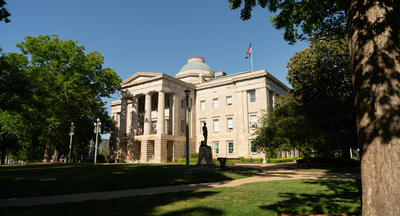
State Government Affairs, Elections & Campaigns
How Lieutenant Governors Are Selected (And Why It Matters)
December 10, 2025 | Bill Kramer
March 15, 2024 | Bill Kramer

Key Takeaways:
We’ve written much on the historic level of political division in the country and how that affects policy. And while one-party political control of the states is a record high, and this has intensified policy differences in red and blue states, a new academic paper throws some cold water on whether the overall policy differences between red and blue states are as stark as a handful of controversial topics leads us to believe.
Researchers at the University of Pennsylvania examined the criminal codes of the six red states and the six blue states. The paper finds that while “one might normally assume that deeply red and deeply blue criminal law rules would be quite different, our research reveals that the red-blue effect seems to appear only in those few instances in which a criminal law rule becomes a public political issue.” In other words, while the criminal codes in red and blue states might diverge on a handful of highly politicized issues (e.g., abortion, decriminalization of marijuana, “stand your ground” statutes, the death penalty, concealed carry), the criminal codes in red and blue states are fairly similar when examined in total.
As with many academic papers that look at state policy, this isn’t a shocking conclusion to many of us who work in state government affairs for a living. The criminal code is vast and drafted over decades if not centuries, utilizing widely agreed-upon model codes and learning from each other. But it is a helpful reminder for all of us that while a handful of controversial issues with extreme political divisions may gain a lot of headlines, they’re only a small part of many statutory volumes and tend to moderate over a longer time horizon. Meanwhile, when a new development occurs that demands a policy response, such as the proliferation of nonconsensual sexual deepfakes we wrote about last week, lawmakers in states controlled by Democrats and Republicans alike will act to address the issue in a bipartisan manner.
So while the states are certainly politically divided, and that affects policymaking, most of the mundane work lawmakers pursue in a legislative session are not the headline-grabbing dozen or so issues where blue states are enacting one version and red states are enacting a very different — what the paper calls “that sliver of criminal law issues that became matters of public political debate.” But those are the issues that lawmakers like to tout in primary elections and the press tends to focus on, which is why the public perception of how divided state laws might be in different states is often exaggerated.
This article appeared in our Morning MultiState newsletter on February 6, 2024. For more timely insights like this, be sure to sign up for our Morning MultiState weekly morning tipsheet. We created Morning MultiState with state government affairs professionals in mind — sign up to receive the latest from our experts in your inbox every Tuesday morning. Click here to sign up.

December 10, 2025 | Bill Kramer
-d868d2-400px.jpeg)
July 1, 2025 | Maggie Mick

June 23, 2025 | David Shonerd